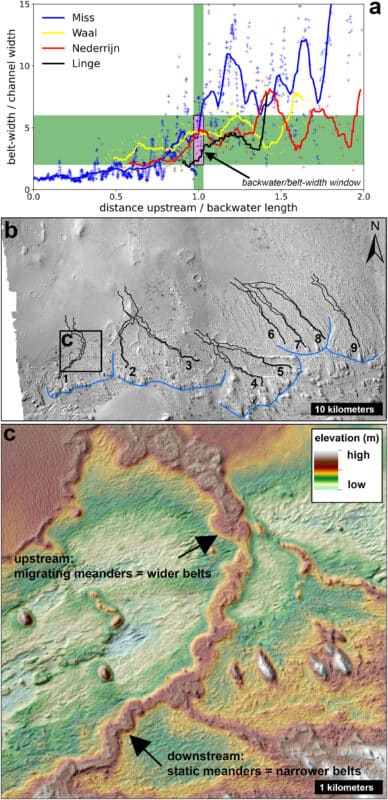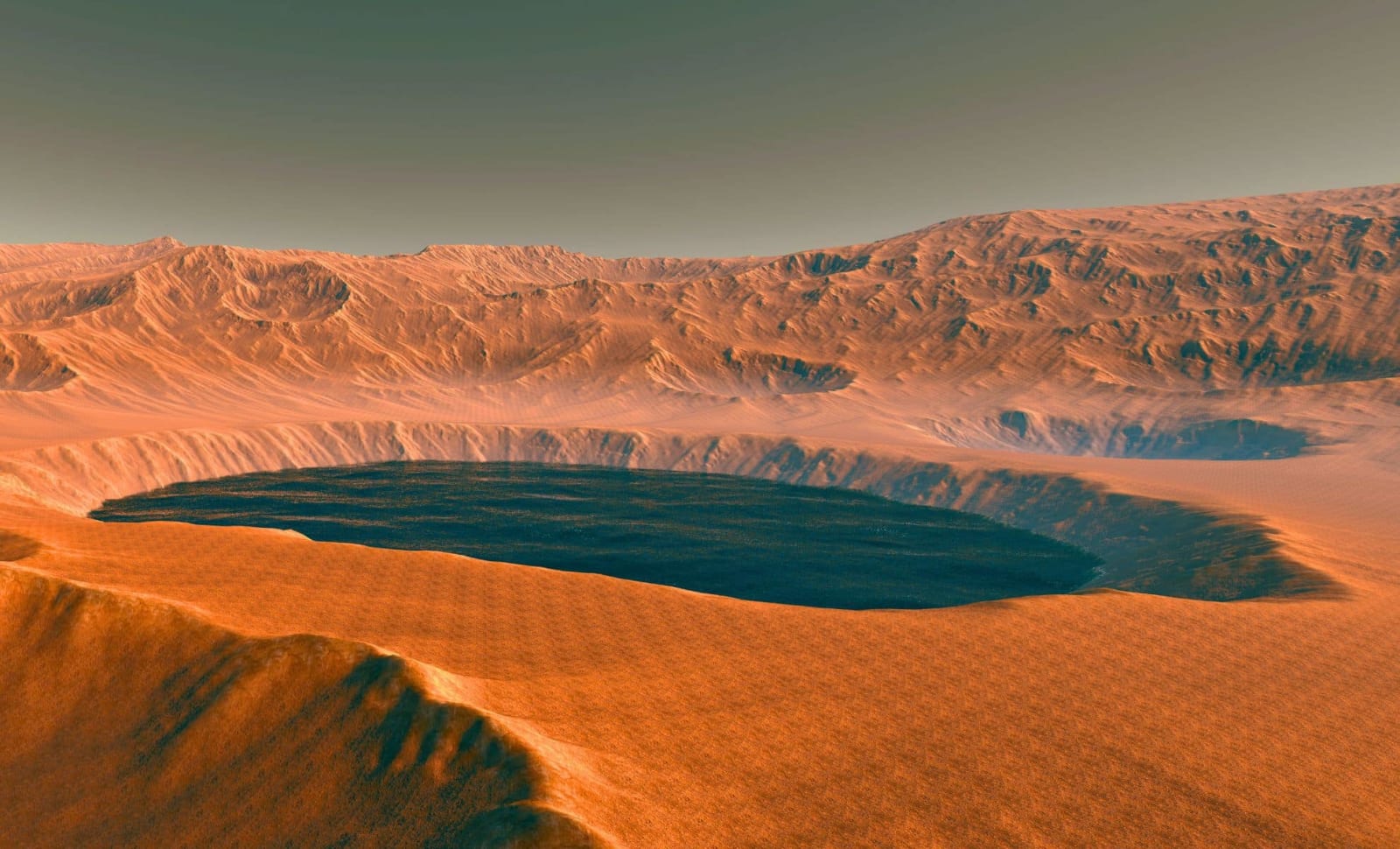Mars, the red planet we know today as cold, dry, and desolate, might not have always been this way. New research from the University of Arkansas suggests that, billions of years ago, Mars was home to massive rivers that flowed into a vast ocean in its northern hemisphere.
This discovery, shared in a recent study published in Geophysical Research Letters, builds on earlier speculation about the presence of water on Mars, with evidence of rivers and lakes being widely observed. However, this new study goes a step further, providing the most compelling evidence yet that Mars didn’t just have rivers—it may have had an ocean, too.
The Clues Hidden in Martian Rivers and Deltas
At the core of the new research is the discovery of large river deltas and backwater zones—areas where rivers slow down when they approach a larger body of water. According to Cory Hughes, the lead author of the study, these features are not just interesting geological oddities; they’re strong evidence that Mars once had a large, still body of water, possibly an ocean.
Rivers on Earth, when flowing into oceans, form deltas as their water velocity decreases. The same phenomenon appears to have occurred on Mars, with Hughes and his team observing Martian river systems that show signs of slowing as they reach a body of water. These Martian deltas, Hughes argues, aren’t just random formations but rather have been shaped over time in ways that suggest they were once fed by an ocean or a very large sea.
Hughes explains, “These are very mature deltas. This is a strong point in favor of an ancient ocean, or at the very least a large sea,” supporting the idea that the rivers didn’t just fizzle out into a dry Martian landscape but instead contributed to a larger, more complex hydrological system.

Topographic Inversion: A Hidden Martian Puzzle
To confirm that these ancient riverbeds are evidence of an ocean, researchers turned to a method known as topographic inversion, a process that occurs when river channels are exposed after millions of years of sediment buildup. OnEarth, this happens when the surrounding soft material erodes, leaving behind ridges of harder material, often sandstone. These ridges reveal the path the river once took.
On Mars, the lack of tectonic activity has preserved these riverbed remnants as inverted ridges. Hughes and his mentor, John Shaw, didn’t stop at Martian features; they also examined a similar phenomenon in Northwest Arkansas, where they discovered a rare example of an inverted river delta. “I literally came here to study this without knowing it was in the backyard,” Hughes said.”No better word can describe that besides serendipity.”
Rivers, Oceans, and the Search for Life on Mars
Liquid water is a fundamental requirement for life as we know it, and according to Hughes, “We don’t know of any lifeforms on Earth, or anywhere in the universe, that don’t require liquid water.” The more liquid water a planet has, the higher the chances it could have supported life. If Mars had large bodies of liquid water, it increases the possibility that life might have once existed there, in some form we’ve yet to fully understand.
The discovery ofrivers and deltas on Mars fuels the ongoing search for signs of ancient life. If The Red Planet once hosted liquid water, it opens up new questions about the planet’s habitability. Although we haven’t yet found definitive proof of life, the discovery of ancient rivers emptying into an ocean suggests that Mars may have been far more hospitable than we ever imagined.
Enjoyed this article? Subscribe to our free newsletter for engaging stories, exclusive content, and the latest news.












